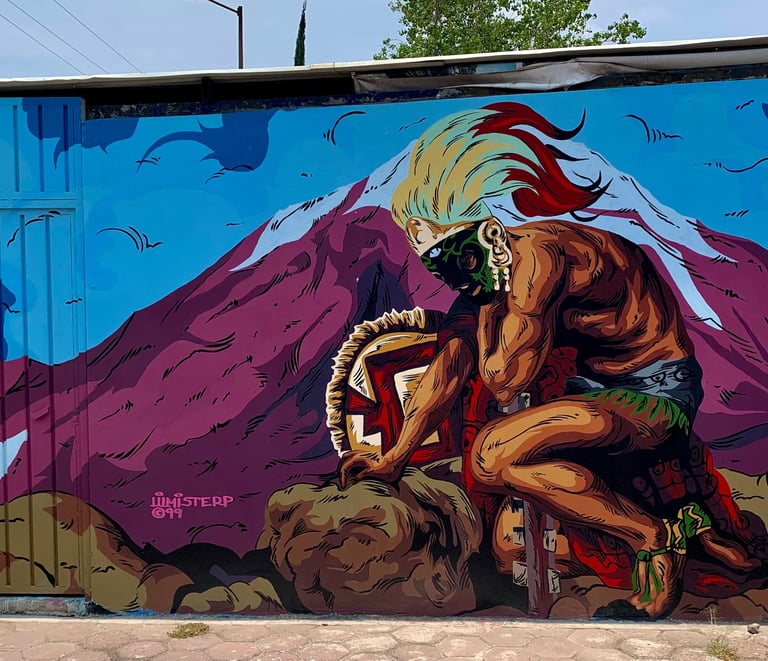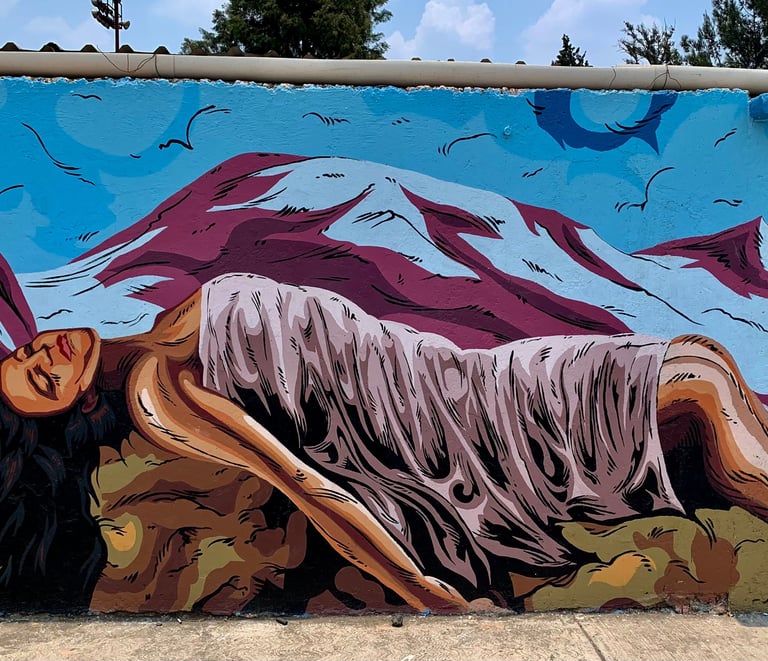Legend of the Volcanoes -Popocatépetl and Iztaccíhuatl
PUEBLA, MEXICO


During my travels throughout Mexico, I have enjoyed learning about local legends that date back to pre-Hispanic times long before the Spanish arrived and have been passed on orally through generations to help explain extraordinary natural phenomena.
During my month-long stay in the historic city of Puebla, I learned about an Indigenous legend of two lovers who were turned into the local volcanoes of Popocatépetl and Iztaccíhuatl. Several variations of the legend exist with different details, given that it has been passed on from generation to generation since the time of the Aztec Empire.
One variation of the legend goes something like this:
Long before the Spanish conquistador Hernán Cortés arrived in Mexico, the Aztecs dominated the Valley of Mexico, and it was common practice for the Aztecs to force neighbouring towns and villages to pay a mandatory tax.
The Tlaxcaltecas, bitter enemies of the Aztecs, decided to fight against the Aztecs to stop paying oppressive taxes. The chief of the Tlaxcaltecas had a daughter named Iztaccíhuatl, who was considered the most beautiful of all the princesses. She was in love with a handsome warrior named Popocatépetl. Before leaving to fight the war against the Aztecs, Popocatépetl asked the chief if he could marry Iztaccihuatl. The chief agreed to their marriage if Popocatépetl returned victorious from the battle.
After several months of combat, a warrior who was jealous of Popocatépetl and wanted to marry Iztaccíhuatl, sent a false message to the chief saying that his army had won the war, but that Popocatépetl had died in battle. When Iztaccíhuatl heard of the news she could not stop crying and could not eat. A few days later, she became ill and died.
When Popocatépetl arrived victorious from war, he learned that Iztaccíhuatl had died of sadness. Devastated, Popocatépetl took Iztaccíhuatl’s body and walked a long way until he arrived at a mountain range where he ordered a great mountain tomb to be built. He placed her body at the summit and knelt down with a torch to watch over Iztaccíhuatl and then also died of sadness. The gods were so touched by their sacrifice, they turned their bodies into great volcanoes for all eternity. Popocatépetl, which in Náhuatl means “smoking mountain” sometimes throws out smoke, showing that he is still watching over Iztaccíhuatl, which in Náhuatl means “woman in white” who sleeps by his side.
When you see these majestic volcanoes, it is easy to understand how they have inspired lasting legends about their origin and creation. These two volcanoes are the second and third highest mountains in Mexico. Today, Popocatépetl, the largest of the two volcanoes, reaching more than 17,000 feet in height, continues to be an active volcano with regular signs of smoke escaping from its mouth high in the sky. Regular eruptions with volcanic smoke and ash from Popocatépetl can affect the local air quality and cause flight disruptions. On February 27-28, 2024, 13 eruptions within 24 hours caused the cancellations of 22 flights at Mexico City and Puebla International Airports.


